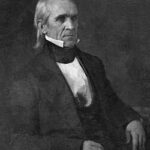President James K. Polk’s reestablishment of the Independent Treasury System in 1846 marked a pivotal moment in American fiscal policy. This reform separated federal government finances from private banking institutions permanently.
The Decision Behind Treasury Reform
The Independent Treasury System emerged from decades of banking controversies and economic instability. Previous administrations had deposited federal funds in private banks, creating opportunities for political favoritism. Polk recognized these “pet banks” threatened fiscal independence and democratic principles. 📊 His administration prioritized financial reform to restore public trust in government operations.
Implementation of Government Vaults
The new system required federal funds to be stored in government-controlled vaults and subtreasuries. This eliminated private bank influence over federal monetary policy entirely. Government officials could no longer use federal deposits to reward political allies. 💰 The reform created transparent, accountable financial management that served public interests above private gain.
Political Support and Opposition
Democrats enthusiastically supported Polk’s treasury reforms as essential democratic progress. Whigs and banking interests opposed the measure, fearing reduced profits and influence. Despite fierce resistance, Polk’s strong leadership secured congressional approval for permanent implementation.
Impact:
The Independent Treasury System’s establishment created profound and lasting changes in American government and finance. This reform fundamentally altered the relationship between federal authority and private banking power.
Immediate Economic Consequences
Federal financial operations became more stable and predictable under government control. 💰 Private banks lost access to federal deposits, reducing their lending capacity initially. However, this separation prevented government financial crises from destabilizing private banking. The system provided fiscal discipline that protected taxpayers from banking speculation risks. Market confidence improved as political manipulation of federal funds disappeared.
Long-term Political Impact
Polk’s treasury reform eliminated a major source of political corruption permanently. 🌍 Future presidents could not use federal deposits to reward supporters or punish opponents. This strengthened democratic institutions by removing financial incentives from political appointments. The system survived multiple economic crises, proving its fundamental soundness over decades.
Historical Significance and Legacy
The Independent Treasury System operated successfully until the Federal Reserve’s creation in 1913. Historians praise Polk’s reform as essential to American fiscal integrity and democratic governance. 📊 This decision demonstrated how principled leadership could overcome powerful special interests. The system’s longevity proved that separating government finances from private control served the national interest effectively. Polk’s treasury reform remains a model for reducing corruption through institutional design.
